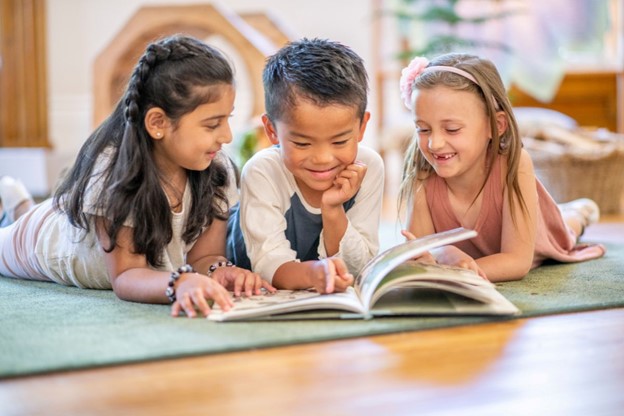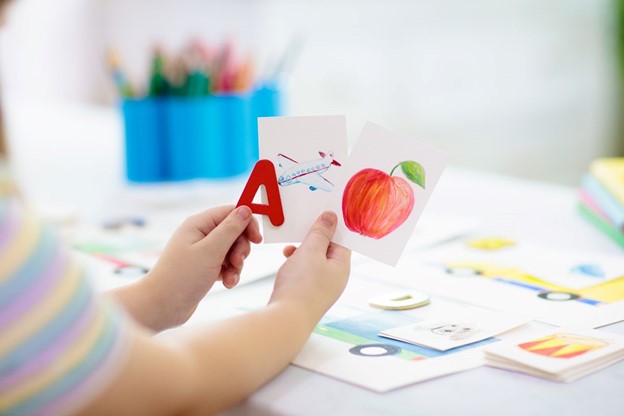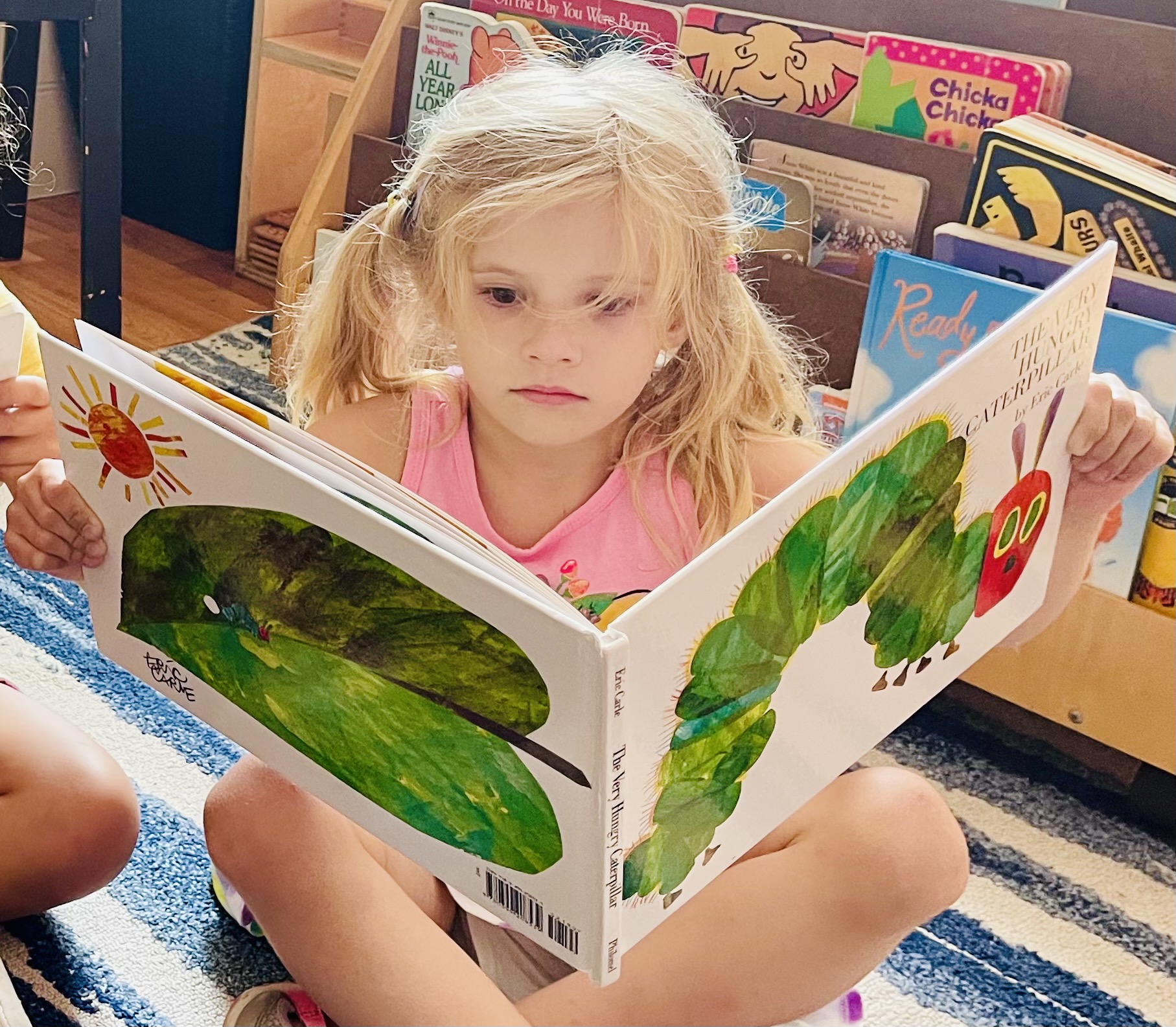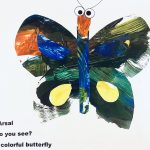Fostering Early Literacy: Strategies to Inspire a Love of Reading
Fostering Early Literacy: Strategies to Inspire a Love of Reading
by Susie Beghin, RECE, Founder of Alpha’s Discovery Kids
Did you know that the foundation for a lifelong love of reading is laid in the earliest years of childhood?
As an Early Childhood Educator and a mother, I am deeply passionate about fostering a love for reading from an early age. At Alpha’s Discovery Kids, we are always exploring natural ways to incorporate language and literacy into our play-based approach to learning. After all, research indicates that the peak ability to learn occurs between the ages of 0 to 6 years, so building strong literacy skills in the early years is crucial for a child’s overall development. The key is incorporating various strategies to make learning enjoyable and effective.
Teaching literacy through free play is one of the most effective ways to engage children and foster a love for reading, and something we do every day at Alphas Discovery Kids! By creating a “print-rich” environment, we surround children with written words and labels that correspond to everyday objects. For example, labeling items with both a picture and written word helps children make associations between the spoken word and its written form. Whenever we engage with these labeled items during work time, we point out the written word, reinforcing the connection between spoken language and print.
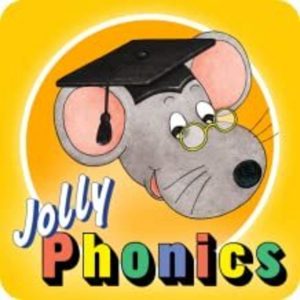
In addition to labeling, we use Jolly Phonics songs as a fun and engaging way to develop associations between letter sounds and letter names. Singing alphabet songs or rhymes helps children become familiar with the sounds of letters while providing a memorable and enjoyable experience.
When it comes to reading books, we believe in making the experience interactive and engaging. Instead of simply reading aloud, we encourage children to participate by asking them questions about the story and what they think will happen next. This not only promotes critical thinking skills but also encourages children to actively engage with the text and develop comprehension skills.
We can also empower children to tell their own stories by interpreting pictures on a page or creating their own narratives based on the illustrations. This encourages creativity and imagination while also strengthening language and storytelling abilities.
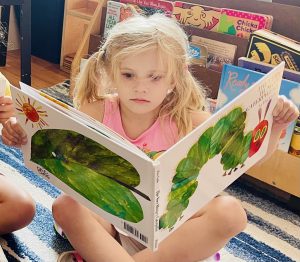 Intentional literacy activities can be tailored to suit children at different stages of development. For infants, daily read-aloud sessions provide valuable opportunities for brain development and foster a sense of curiosity about the world. As children transition into the toddler stage, tactile activities such as using alphabet magnets or drawing letters in sand help introduce them to the alphabet in a hands-on way. A quick tip is to start with 5 to 7 letters and gradually add more as children learn. This ensures that they can build upon their knowledge at a pace that suits them.
Intentional literacy activities can be tailored to suit children at different stages of development. For infants, daily read-aloud sessions provide valuable opportunities for brain development and foster a sense of curiosity about the world. As children transition into the toddler stage, tactile activities such as using alphabet magnets or drawing letters in sand help introduce them to the alphabet in a hands-on way. A quick tip is to start with 5 to 7 letters and gradually add more as children learn. This ensures that they can build upon their knowledge at a pace that suits them.
For preschoolers, we introduce the alphabet scavenger hunt as a fun and interactive way to reinforce letter recognition and early literacy skills. Children are encouraged to search for objects that begin with specific letters, promoting active engagement and exploration while strengthening their understanding of the alphabet.
By incorporating these strategies into our curriculum at Alpha’s Discovery Kids, we aim to instill a lifelong love for reading and learning in children from a young age. By making literacy fun, interactive, and accessible, we empower children to become confident and enthusiastic readers, setting them up for success in school and beyond.
For more information about this and other early childhood education topics, check out our YouTube videos.
Language and Literacy in the Early Years – Four Pillars of Learning
Language and Literacy in the Early Years – Four Pillars Of Learning – Pillar #1
by Susie Beghin, RECE, Founder of Alpha’s Discovery Kids
When I sat down to write my book, Learn To Play, my goal was to share the knowledge and learnings that I have personally had during my time as an ECE educator and a mom.
My mission has always been to give children the best start in life, and at the core of this is showing children how to develop the critical skills they need to succeed in life.
Parents and Caregivers are the most important educators for our children, and our goal at Alpha’s Discovery Kids is to help enhance what parents are already doing at home by guiding children through each of our Four Pillars of Learning, allowing them to learn in a meaningful way.
When I developed the Four Pillars of Learning system, my focus was on developing a program that meets a child’s needs from physical, cognitive, social, emotional and spiritual well-being.
The Four Pillars of Learning consist of Language & Literacy, STEAM (Science, Technology, Engineering, Art and Math), Physical Activity & Nutrition and Mindful Awareness. These pillars are taught in every classroom in each of our 3 locations.
LANGUAGE & LITERACY – THE FOUNDATION OF ALL PILLARS
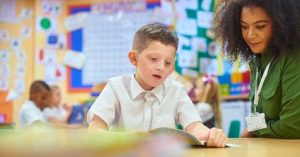
Just like the foundation of a house helps support the rest, Language & Literacy is the basis of all the other pillars. However, children cannot learn the other pillars without first learning communication, both spoken and written.
In the early years, especially at the toddler stage, we heavily focus on spoken language, as this is the basis for the eventual skill of reading and writing.
We understand how imperative helping little brains to form is, and we recognize that each stage of growth and development requires focused and unique techniques geared towards helping kids learn and grow to the best of their ability.
When it comes to language and literacy, at Alpha’s Discovery Kids, we understand that the more we speak with children and engage them in real conversation, the better the child will develop these skills.
By teaching language and literacy in a fun and intuitive way that is easy to understand and remember, kids get to be kids while learning! And we don’t leave the learning to just one part of our day – literacy is weaved into every aspect of our children’s day. From listening to language songs during meal times to narrating play, we make learning language part of everything we do.
All of our early childhood educators narrate and label throughout the day. We even label objects with their word (e.g. the word table is taped onto a table) so that sight word memory can be infused throughout the classroom.
And by narrating and providing a play-by-play of what they are doing or using, our teachers can help the children increase their vocabulary in an easy and fun way.
THE JOLLY PHONICS PROGRAM

Here at Alpha’s Discovery Kids, we use the award-winning Jolly Phonics program. This program has been incredibly successful in helping kids learn to read and write in their early years. The program teaches letter sounds instead of the alphabet, starting with the most common letter sounds (S, A, T, etc.).
The goal is to start getting kids familiar with letters they will most often see and use for reading and writing. And by using a play-based program that uses music and song to teach letter sounds and letter names, kids can then piece together the various sounds to make words.
The amazing part of this program is that when kids learn the letter sounds, even if they don’t know the names of the letters yet, they can piece the sounds together to create words. And by blending the sounds, they can start to build and formulate words and, eventually sentences!
We also understand that learning styles will vary from child to child. Our literacy programs work for any type of learner. If your child is an auditory learner, they’ll learn from the catchy songs. If they are visual learners, they’ll learn from the movements and actions. And if they are Kinesthetic, they’ll learn by body movements that accompany the letters.
All of our knowledge and nurturing staff have one goal – to keep your child safe while fostering their creativity in a warm, caring environment while allowing them to reach their full potential.
By being patient and using specific strategies to help build their language skills, it’s amazing to see the progress a child can make.

Our New Mississauga Location is located at 2632 Liruma Road, Mississauga, ON L5K 1Z1. To book a tour or for more information, please contact us at https://www.alphasdiscoveryclub.com/contact/ or call us at 905-823-8257.
Why we love Eric Carle books to promote early literacy
in loving memory of Eric Carle
One of our favourite books to promote early literacy at Alpha’s Discovery Kids is The Very Hungry Caterpillar, by Eric Carle. In fact, it was the inspiration for our metamorphosis project last month. Amid our metamorphosis project, author and illustrator of this iconic children’s book, Eric Carle passed away on May 23rd, 2021, at the age of 91. Eric Carle will live on in our hearts and through his legacy of great literature.
The Very Hungry Caterpillar was among many fantastic Eric Carle books known around the world. Other beloved titles from Eric Carle include The Very Busy Spider, Brown Bear, Brown Bear, What Do You See? and The Artist Who Painted a Blue Horse.
For many educators, parents and children of all ages, his works have been a staple in their children’s literature collection. Carle’s incredible collection of work has earned him a variety of accolades, including the Children’s Literature Legacy Award.
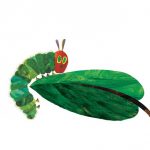
Here are three reasons why we love Eric Carle books!
1. Predictive Text
Predictive text builds confidence in young readers. In most of his early literacy books, the designated format repeats throughout the text and allows children to predict it. When young readers pick up on the pattern, you see the sparkle in their eyes. At first, they read along with you. Then, they use the pictures along with the pattern to feel like they are “reading”. This develops confidence right from the start. Be sure to point to each word as you read it to demonstrate one-to-one correspondence.
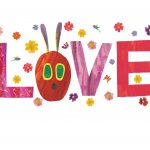
2. Life and Life Lessons
The Very Hungry Caterpillar is amazingly useful in so many ways. It creates a sensorial early literacy experience when children touch the holes on each page. When children engage their senses beyond listening during a literacy experience, they retain more knowledge. Any time that children are touching, feeling, and interacting with the text, is a win! Additionally, the very hungry caterpillar can be tied into many real-life topics and teachable moments such as the life cycle of a butterfly, eating healthy and the days of the week.
- The Grouchy Ladybug – teaches about manners and encouraging prosocial interaction to build connections with others in an appropriate way.
- Brown Bear, Brown Bear, What Do You See? is an all time classic that teaches children colours, and animal names in an abstract and imaginative way using unexpected colours like “purple cat” or “blue horse”
- Panda Bear, Panda Bear, What Do You See? and Polar Bear, Polar Bear, What Do You Hear? have the same predictable patterns. Panda Bear addresses endangered animals, which can be a great way to tie in social studies. You can identify where the animals in the book live on a map and talk about ways to help these animals by doing things like taking care of the environment.
3. The Illustrations are AMAZING!
Eric Carle’s art is distinctive and instantly recognizable. His artwork is created in collage technique, using hand-painted papers, which he cuts and layers to form bright and cheerful images. The brush strokes show texture and dimension and a signature creation that can only be connected to his unique style. A true work of art on every page!
These books inspired us to create our own book using his technique. Here’s what we did, and you can do this at home too!
- Paint an open-ended abstract picture.
- Ask the child to name their favorite animal.
- Cut out the painted picture into strips or shapes.
- Glue the pieces together in the shape of their favourite animal. They may need some assistance with this part.
- Add the text in the format “Child’s Name, Child’s Name, what do you see?
- Record the name of the animal and colour with the text. “I see a Colour Animal looking at me!”
- You can laminate the page and create more pages to make a book. Assemble the pages with a hole punch and binder ring.
Voila! You have your own homemade “Eric Carle” style book that your family will treasure! Our children love to make homemade books and keep going back to read them over and over again!
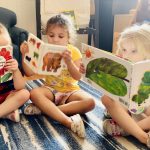
Take a look at our metamorphosis project video.

